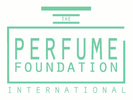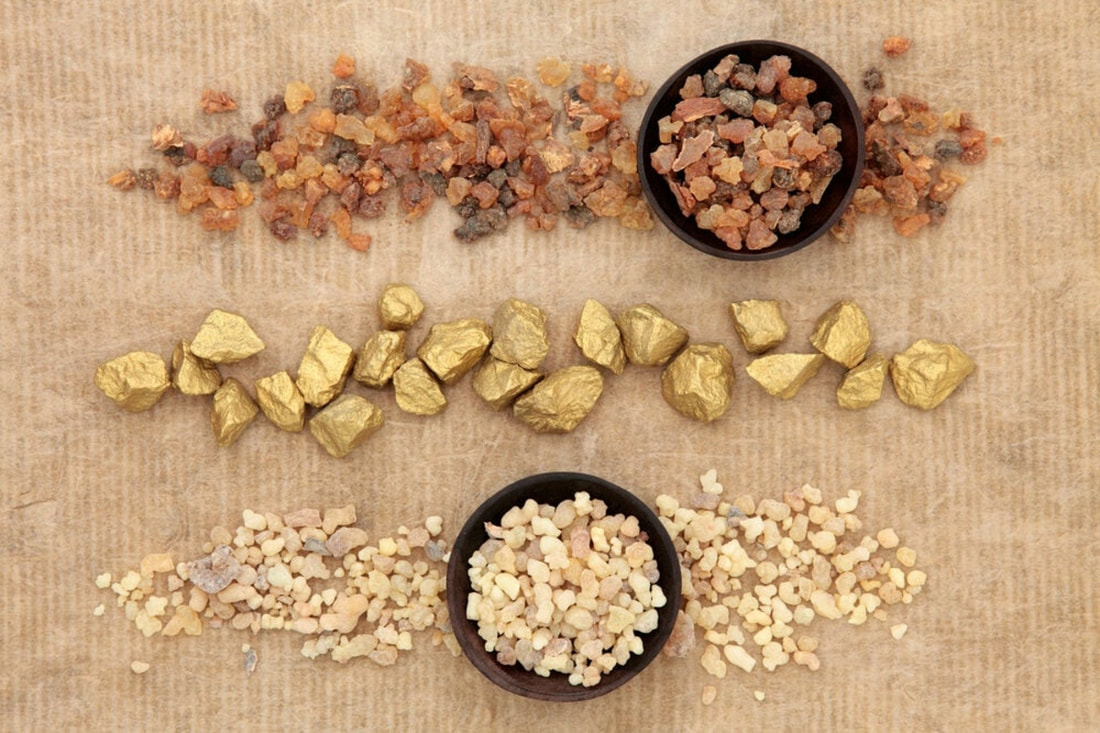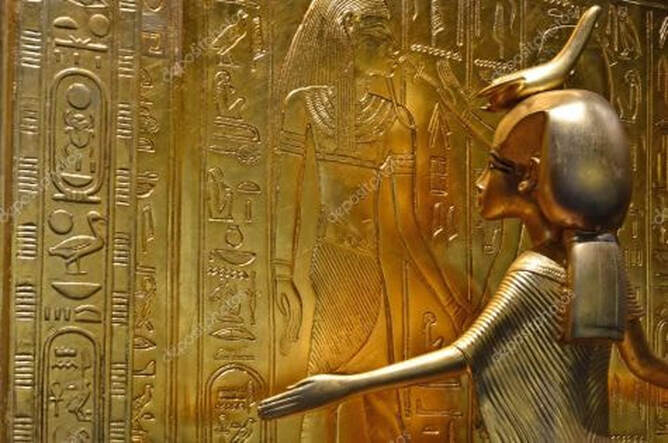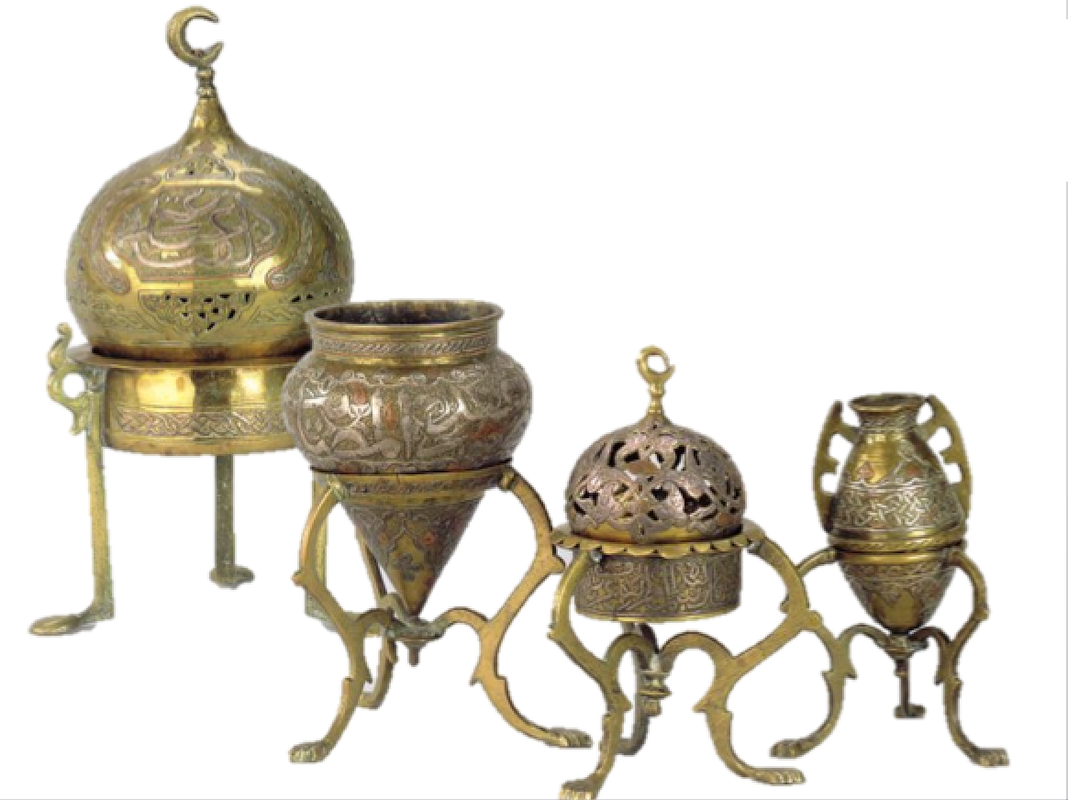|
By Creezy Courtoy, IPF Founder, Perfume Historian and Anthropologist Tracing the Historical Path of Incense, Myrrh and "Gold" As the essence of Christmas envelops us, the shimmering allure of gold intertwines with ancient trade routes and the symbolic journey of the Three Kings. Egypt's pursuit of incense, myrrh, and oud through the exchange of gold highlights the interconnectedness of cultures and the quest for precious treasures. Together, let us embrace the universal values of peace and unity, inspired by the story of the Three Kings, the timeless significance of gold in our celebrations and the spirit of peace. The Magnificence of Incense, Myrrh, and Oud During antiquity, Egypt was known for its rich trade connections and its desire for valuable commodities, including incense, myrrh, and agarwood. These aromatic substances held significant cultural and religious importance in ancient Egypt, and they were highly sought after for their fragrance and other perceived qualities. The fragrant smoke of incense was believed to carry prayers and offerings to the heavens. Myrrh, used in embalming and as a sacred offering, symbolized purification and spiritual connection. Oud, with its captivating aroma, was a prized ingredient in perfumery and incense-making. Egypt, renowned for its opulence and reverence for these aromatic substances, sought to obtain them from regions along the Perfume Roads. Incense: Incense was widely used in religious rituals, offerings, and ceremonies in ancient Egypt. It was believed to possess purifying and protective properties, and its fragrant smoke was thought to carry prayers and offerings to the gods. To obtain these sought-after varieties, Egypt had to engage in trade with regions like Arabia and the Horn of Africa, where these substances were produced. Myrrh: Myrrh, another aromatic resin, held religious and medicinal significance in ancient Egypt. It was used in embalming practices and as an offering to deities. Egypt's access to myrrh was limited, as it primarily came from regions like present-day Somalia, Ethiopia, and Yemen. Agarwood (Oudh): Agarwood, also known as oudh, is a fragrant wood derived from the Aquilaria tree. It has a rich, woody aroma and is highly valued in perfumery and incense-making. Agarwood was sourced from regions such as Southeast Asia and the Indian subcontinent. Egypt's Trade: Gold for Precious Fragrances The acquisition of these precious substances, however, often required the exchange of large quantities of gold due to their scarcity and demand. Gold, which was highly valued, served as a medium of exchange in international trade. As caravans traversed desert landscapes, laden with gold, they ventured towards regions like Arabia, the Horn of Africa, and the Indian subcontinent. Egypt's desire for incense, myrrh, and oud drove the trade of this precious metal, forging connections and fostering cultural exchange along the ancient trade routes. Gold mining, both in Egypt and through trade with neighboring regions, was a significant source of wealth for the ancient Egyptians. Egypt's abundance of gold during antiquity can be attributed to several factors, including its geographical location, natural resources, and historical developments. Egypt had its own gold deposits, primarily located in the Eastern Desert, near the Red Sea. Ancient Egyptians developed mining techniques to extract gold from these deposits. They employed methods such as panning, sluicing, and tunneling to access the gold-bearing ore. Egypt's location in northeastern Africa placed it in proximity to gold-rich regions, such as Nubia (present-day Sudan) and the Eastern Desert. Nubia, located to the south of Egypt, was particularly renowned for its gold mines. The Nubian region had significant gold deposits, including alluvial gold found in riverbeds and veins of gold embedded in rocks. Gold held immense economic value in ancient Egypt. It was widely used as a medium of exchange, a store of value, and a symbol of wealth. Gold was employed for various purposes, including trade, religious offerings, ornamental and luxury items, and the adornment of pharaohs and temples. The demand for gold, both domestically and internationally, contributed to its importance as a form of wealth for Egypt. Additionally, Egypt was able to acquire gold as tribute or payment from conquered territories or through diplomatic relations with neighboring regions. Gold held deep cultural and religious significance for the ancient Egyptians. It was associated with the sun god Ra and was considered a symbol of divine power and eternal life. Gold was used in religious rituals, temple construction, and burial practices, indicating its importance beyond its economic value. These factors combined to make Egypt a significant center for gold acquisition and accumulation during antiquity. Egypt's control over gold mining, its trade connections, and its cultural reverence for gold allowed it to amass substantial wealth in the form of this precious metal. The Journey of the Three Kings The Three Kings are believed to have originated from different regions of the ancient world. Melchior, often depicted as an elderly Persian scholar, hailed from Persia (modern-day Iran). Balthazar, portrayed as an African or Arabian nobleman, is thought to have come from Sheba or Arabia Felix (present-day Yemen). Lastly, Gaspar, a youthful figure, was said to have hailed from Saba (modern-day Ethiopia or Sudan). The Three Kings carried precious gifts symbolizing their reverence and respect for the newborn baby. These gifts were not only symbolic but held great value during the time. Beyond their biblical narrative, the journey of the Three Kings holds historical significance. It reflects the ancient trade routes that connected civilizations, the cultural exchanges that took place, and the role of Arabia as a center of commerce and knowledge. The gifts the Kings presented also highlight the importance of incense, myrrh, and gold in ancient societies. To reach their destination, the Three Kings embarked on a perilous journey across the vast Arabian Desert. This desert, with its shifting sands and treacherous terrain, presented numerous challenges. The exact route they took remains a subject of speculation, but historical evidence suggests they likely followed ancient trade routes and oasis trails, navigating by the stars and their knowledge of the desert. The Path through the Arabian Desert
From Persia to Arabia: Melchior, the Persian king, set out from his homeland, traversing arid plains and rugged mountains. His journey took him through the ancient cities of Persis, Parthia, and the Arabian Peninsula, eventually leading him towards the southern Arabian region. Melchior presented gold, representing kingship and wealth. From Saba to Arabia Felix: Balthazar, originating from the Kingdom of Saba, embarked on his expedition from the southwestern Arabian Peninsula. He embarked on a challenging trek through the deserts of Yemen, navigating the arid landscapes and ancient trade routes that connected the region with the rest of the world. Balthazar offered frankincense, a fragrant resin used in religious rituals, symbolizing divinity. From Saba to the Land of the Nile: Gaspar, the youngest of the Three Kings, hailed from the Kingdom of Saba. He embarked on his journey, traveling northward, along the Red Sea coast. Crossing vast stretches of desert, he eventually reached the ancient land of the Nile, making his way to the heart of Egypt. Gaspar bestowed myrrh, an aromatic resin used in embalming, symbolizing mortality and sacrifice. Gold or Liquid Gold? While Melchior is traditionally associated with offering gold, it is intriguing to explore the symbolic connection between gold and oudh or agarwood, the most precious scent in Arabia, often referred to as "liquid gold." Gold has long been associated with wealth, luxury, and kingship in various cultures. In the context of the Three Kings' story, Melchior's gift of gold symbolizes the recognition of the newborn baby's royal status and the acknowledgement of his future as a great ruler. In addition to its material value, gold also represents purity and divinity. Its shimmering brilliance has often been associated with the divine presence and elevated spiritual significance. Similarly, oudh or agarwood holds a special place in Arabian culture and has been treasured for centuries for its exquisite fragrance and rarity. Oudh is derived from the resinous heartwood of the agar tree, primarily found in Southeast Asia, India, and the Arabian Peninsula. It is a highly sought-after fragrance ingredient, renowned for its rich, complex aroma, often described as woody, balsamic, and captivating. The extraction process of oudh is meticulous and time-consuming, contributing to its high value. The term "gold" used to describe oudh or agarwood in the context of the Three Kings' gifts signifies its extraordinary worth and significance. Oudh is considered a precious treasure, a symbolic representation of luxury, spirituality, and devotion. Just as gold is associated with kingship, oudh is associated with nobility and opulence in Arabian culture. It is important to note that while the inclusion of oudh as "gold" in the Three Kings' story may have cultural significance and symbolism, it is not a historical fact but rather a poetic interpretation that enriches the narrative and adds to its allure. The inclusion of oudh as a symbolic representation of gold in some interpretations of the story is a way to add cultural richness and depth to the narrative. It draws upon the significance of oudh in Arabian culture and its association with luxury and opulence. The Symbolic Journey of the Three Kings, a desire for peace, harmony: The biblical tale of the Three Kings, or Wise Men, embarking on a journey across the desert to present gifts to the infant Jesus in Jerusalem, encapsulates the spirit of peace and harmony among the three Abrahamic religions. Symbolizing Judaism, Christianity, and Islam, the Three Kings epitomize the unity and shared reverence for the divine. The gifts they brought signify not only material wealth but also spiritual devotion and the pursuit of peace. Their passage through the desert echoes the importance of pilgrimage and the pursuit of spiritual enlightenment. The exchange of these precious gifts symbolizes a desire for peace, harmony, and the recognition of the divine presence within humanity.
0 Comments
By Creezy Courtoy, Perfume Historian and Anthropologist For a long time, Perfume remained an important source of revenue for Greece. In the Bronze Age, Egypt, due to its geographical, protected and isolated location and by its geological wealth and cultures, was obliged to import raw materials from Arabia and the Aegean Islands. Egypt was rich in gold, but did not possess the raw materials necessary for making perfumes. Arabs, Hadramaout (South Yemen) and Dhofar (Oman) provided Egypt with scented woods and resins (myrrh, incense, olebanon) and Greeks provided flowers, herbs and their talents of perfumers in the confection of perfumed oils. Greece was then a country of farmers, breeders, Artisan Corporations and a fighting aristocracy. Greece was a country of scents, herbs, flowers and plants. Due to its geographical location and its numerous surrounding islands, Greece was a gateway to Asia Minor, Syria and Egypt. The Greeks are credited for having added to spices, to gums and to balms, oils scented with flowers. Flowers and plants used for export had to be preserved and transformed. Olive oil, one of the main resources of Greece, was used as an ointment and as an excipient or absorbent in perfume oils. The Greeks practiced ‘enfleurage’ and from an early age, the art of creating perfumed oils. In the time of Ancient Egypt, perfume was used mainly to communicate with the gods; during Ancient Greece, it was used to resemble the gods. Perfume was actually used by Egyptians but never throughout history could Egyptians, impregnated with fragrant scents, assist human divination, not only in the sculptural art that gave the gods their human faces and bodies, but also in the wearing of perfume that participated in this quest of perfection by making humans more divine. Since gods smell good, to be like them you must smell divinely good. The Greeks associate perfume to the erotic power of the union of two people. The Greeks buried their dead with their possessions and a terracotta vase or alabaster containing perfume. For poor people, vials painted onto the coffin replaced the alabasters. The perfume played the role of intermediary between the world of people and that of Gods and helped the dead to reach the other world. In everyday life, perfume was not a neutral thing, « thion », « myron » or a simple aroma but a feminine being. It was used in and for everything; as a life elixir, a nectar, and a ragweed. It gave hope of immortality to humans because the Gods were beautiful and immortal. For the author Virgil, Venus (Aphrodite) created the rose perfume. "One day, Venus wanted to cut a white flower and pricked herself, covering her with an everlasting purple color. To Cupid, the rose seemed so beautiful that he kissed it… This is where its smell comes from." Towards the end of the II Millennium BC, the Greek industry acquired knowledge, “art de vivre” and know-how that gave birth to the Europe of Perfumes. Pliny the Elder, in his Natural History text (XIII 9-12 XV, 28-38), mentioned at least 22 kinds of perfumed oils, most of them extracted from plants naturally growing on the island of Crete: cypress, marjoram, broom, iris, spikenard, rose, myrtle, laurel, crocus, lily, juniper, pine, nut, almond, carnation, poppy, coriander, aniseed, cumin, narcissus, and daisy. During the period of the Mycenaeans, even taxes were paid in plants. Circa 1450 BC, perfumery was truly an industry controlled by the Masters of the Mycenaean palaces. The decryption of linear writing par par Alice Kober in 1947 and Michaël Ventris et John Chadwick in 1952, found on 20% of the 7000 Mycenaean clay tablets of the islands of the Aegean Sea show that a prominent position was given to scented products, ointments, incenses, aromatic wine, perfume oils, and spices. Everything listed on these tablets provided a real accounting of orders and exports. Perfumery, in Greece was mainly a branch of medical science. Some odors excited or inspired while others healed. Hippocrates studied skincare in a comprehensive manner and advocated perfumed baths and massages combined with the use of aromatic substances to treat some diseases. He recommended remedies based on sage, cinnamon or cumin, applied either through fumigation, potions, frictions or aromatic baths. He also used perfume as a protection against diseases. It is said that he saved Athens from the plague by burning aromatic woods and hanging flower garlands in the streets. Hippocrates considered various oils used to preserve odors, the use of flowers and spices and the choice of a hundred perfumes for different states of mind and health both for men and women. "Because both senses – taste and smell – are linked one to another, each serves somehow the pleasure of the other and man can thus discover fragrances either because it pleases the taste or the sense of smell.’’ Théophraste (400BC Book of Odors – Chapter III) The Greeks were the first to utilize ‘’packaging’’ and ‘’marketing techniques’’. The alabasters, the oenochoes and the ariballoi were all made of terracotta decorated with trendy themes, perfectly understood by all the populations of the Mediterranean and all refer to Greek mythology or to major known themes. These vials were presented in various sizes in the same way as bottles are today: from the small inexpensive ariballoi vial containing little perfume to the enormous and expensive ariballoi jar which would today correspond to 1 litre of perfume. For a long time, perfumery items remained an important source of revenues for Greece. Cargos of wax-sealed vials and vases containing perfume oils were continuously leaving Peloponnese or Crete towards Mediterranean ports. Masters in the Art of creating perfumes; Masters in the Art of Cosmetics, ornament and make-up; Masters of the Art of packaging: the Greeks created the first industry of perfumery during Ancient times. If you want to learn more about the Anthropology and History of Greece or any other countries, enrol for Creezy Courtoy's Courses or Master Classes
By Creezy Courtoy, World Perfume Historian and Anthropologist My first passion has always been the impressive history of perfume and I could never think the way I think today if I did not spend all my life collecting perfume antique artworks and searching for the true perfume history. When you start searching, it never ends and still today I am looking for something; each piece leading me to more research. In the Arab World, perfume was precious, it was considered as pure gold. Let me invite you to follow me on the history of perfume in that part of the world. Circa 4000 B.C., the Sumerians built the first City States such as Sumer, Ur, Uruk or Nippur, along rivers. “Mesopotamia” literally means “the country between the two rivers”. Located between Tiger and Euphrates, this region currently corresponds to Iraq, Syria, Lebanon, Southern Turkey and Israel. Cuneiform writing carved onto the clay tablets reveals formulas and perfumes used by these ancient populations since the middle of the third millennium B.C. Lebanese cedar, cypress and myrtle were the three most used fragrances. Originally, the gods loved natural perfume and got close to those who wore them. This is why the servants of the temple covered their bodies with myrtle oils before carrying out the rituals and the offerings to the numerous gods. Perfumes were reserved to divinities, kings and temple worship. Gilgamesh, King of Uruk, lived a rather eventful life, characterized by his vain quest for immortality. Perfume, the most noble and precious element then made its way into his alchemy research. The relation between medicine and gods was very close. One of the healing gods was the two-headed snake Ningishzida. The snake, symbol of eternal life, might have been the first icon of caducei. His name in Sumerian is translated as “lord of the good tree”. About 1000 years later, the Akkadians replaced the Sumerians and created the first empire of the world ruled by Sargo the Ancient.
Phoenicians sailors and traders settled on the coast of Lebanon and build colonies in Cyprus, Crete, sicilia, malta and Northern Africa. Tyr, their capital, having enjoyed a permanent relation with Egypt and Mesopotamia, became one of the most important ports. Circa 1900 B.C., Babylonians replaced Akkadians. Hammurabi (1792-1750 B.C.), created the powerful empire of Babylon. Babylon remained the main warehouse of spices from all over the world for a long time. It received spices from India and from the Persian Gulf, scented gums from Arabia and balms from Judea. Nabuchodonosor I (1124 B.C.) had his palace built with cedar beams and cypress doors that smelled kilometers away. According to Herodotus, over 1000 talents of pure incense were burnt every year on the altar of Belus. Zoroaster prescribed the use of perfumes on altars five times a day. In the hanging Gardens of Babylon, one of the seven wonders of the Ancient World, all the scented plants were showcased. According to Diodorus, (Greek columnist of the 1st century, contemporary of Julius Caesar) cedar, mimosa, Arabian jasmine, lily, crocus, iris, violet and rose, gave the Kingdom the reputation of owning the most beautiful roses of the Ancient Orient. Chaldeans, circa 600 B.C., represented the last civilization of Mesopotamia with two famous Kings: Nabopolassar and Nabuchodonosor II. They inherited a great culture, developed astronomy, astrology and added all this science to the Art of Perfumery. Plants and resins must be collected at certain times in the day, or at a precise moment in the year in order to reinforce their efficiency. The fall of Babylon, conquered by the Persians in 539, did not upset the trade of perfumes. Focused on the fringes of the desert, the caravan kingdoms owed an important part of their prosperity to the trade of perfumes. Sidon (then Carthage) replaced Babylon as the capital of perfume and spices. For the Cananeans as well as for Babylonians, Phoenicians and Sabaeans, perfumes and spices were both pure gold and divine message. For thousands of years, they carefully preserved the trade and even caused wars. Arabia Felix, also called the “Fertile Crescent”, stretched from Oman to the Suez Gulf and across its length were paths taken by the caravans. Called “The Perfume Roads”, these ancient trails linked the south to the North of this continent and crossed the deserts of one of the oldest countries in the world. To ensure the security of the trade on The Perfume Roads, in the 10th century B.C., Balkis, the Queen of Sheba organized a meeting with Solomon, the Hebrew King... If, like me, you are impassioned by World Perfume History, I will be happy to transmit my knowledge to you and tell you more about the Perfume History in the Arab World. We definitely need more perfume history teachers to make sure the perfume heritage will be preserved and transmitted to the next generations. |
Archives
March 2024
Categories
All
|
- Home
- About
- Why choosing us
- Mission
- Academicians
- IPF Certification
-
COURSES
-
MASTER CLASSES
- Teaching Methodology
- Natural Raw Material Extraction Methods >
- Natural Candle Making
- Healing Gardening
- Sustainable Oud MasterClass
- World Perfume History Master Class
- Scent Design and Formula Building >
- Fragrant Botany & Chemistry >
- Perfume Design, Concept and Storytelling
- French Natural Aromachology #1
- French Natural Aromachology #2
- Olfaction Training for Children
- Accords - Musks
- Accords - Chypre
- Accords - White Florals 1
- Accords - Fougeres and Aromatics
- FRAGRANCE DEVELOPMENT
- SPEAKERS
- EXHIBITIONS
- Partners
- Blog
- Contact










 RSS Feed
RSS Feed
